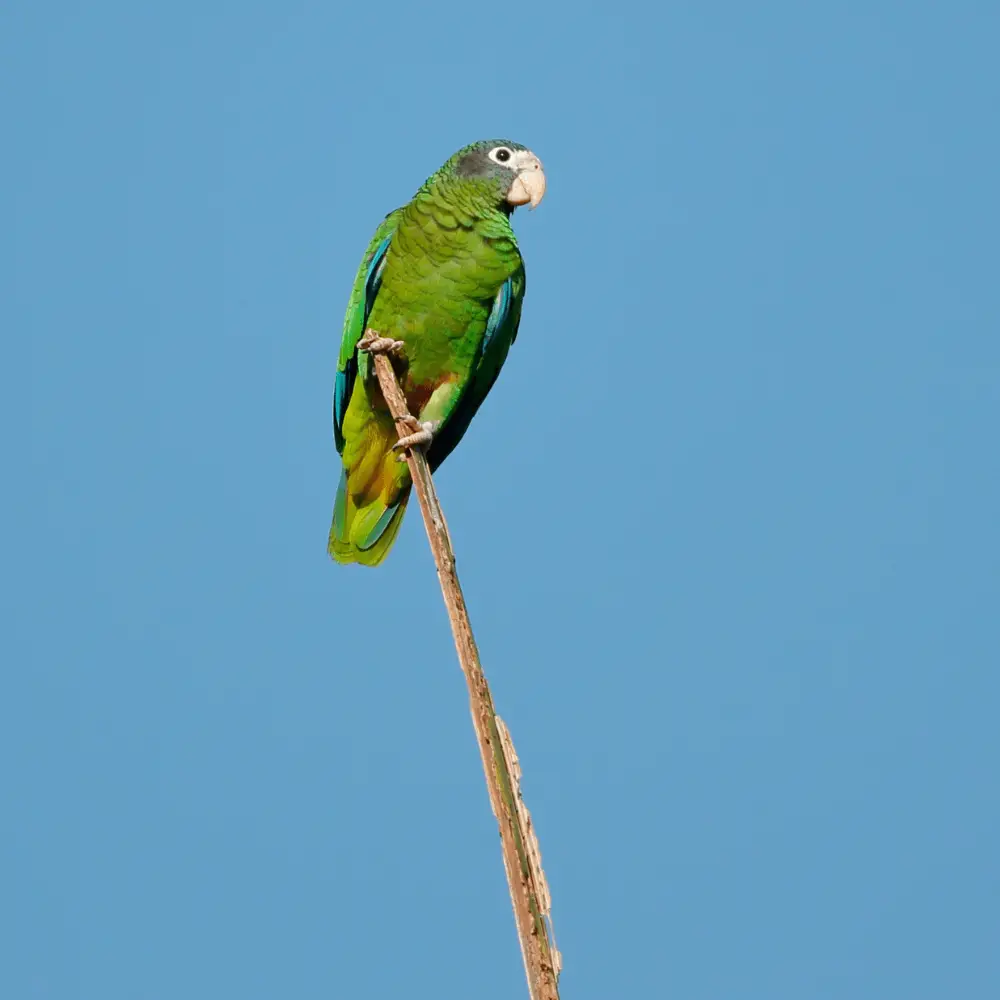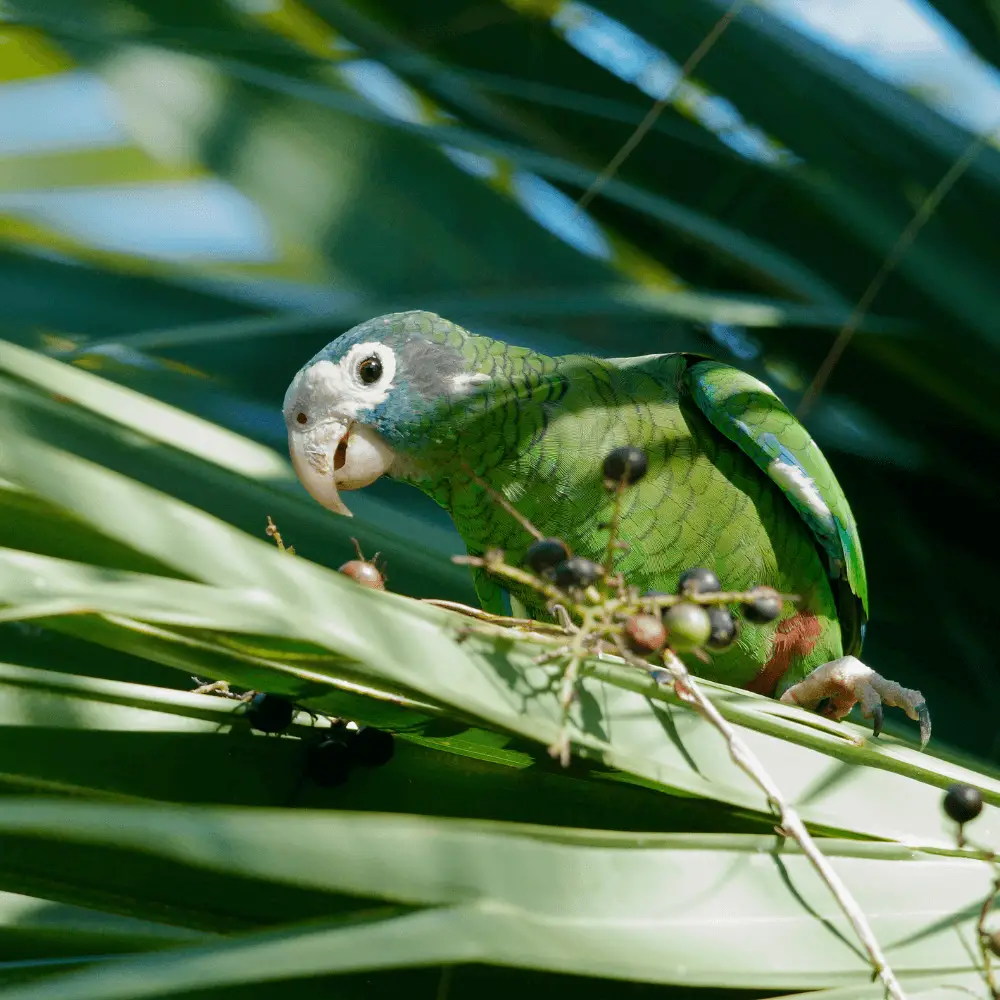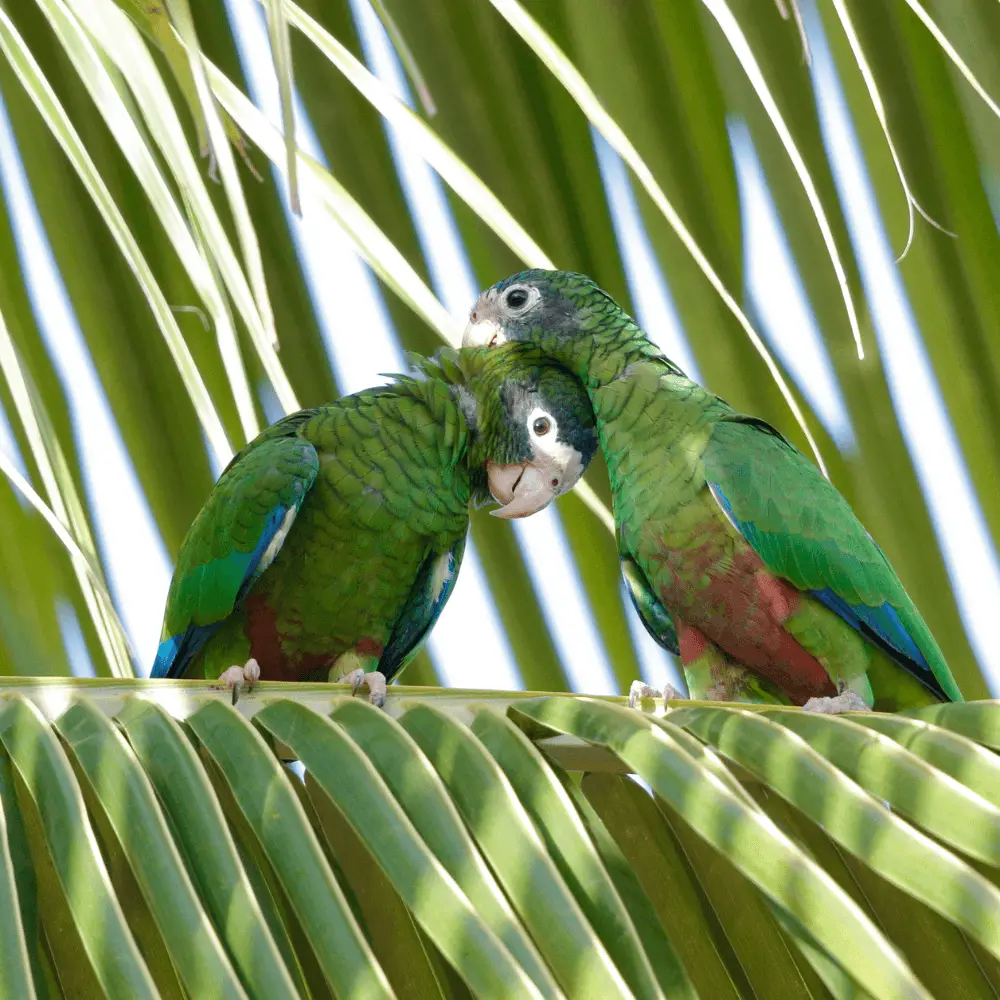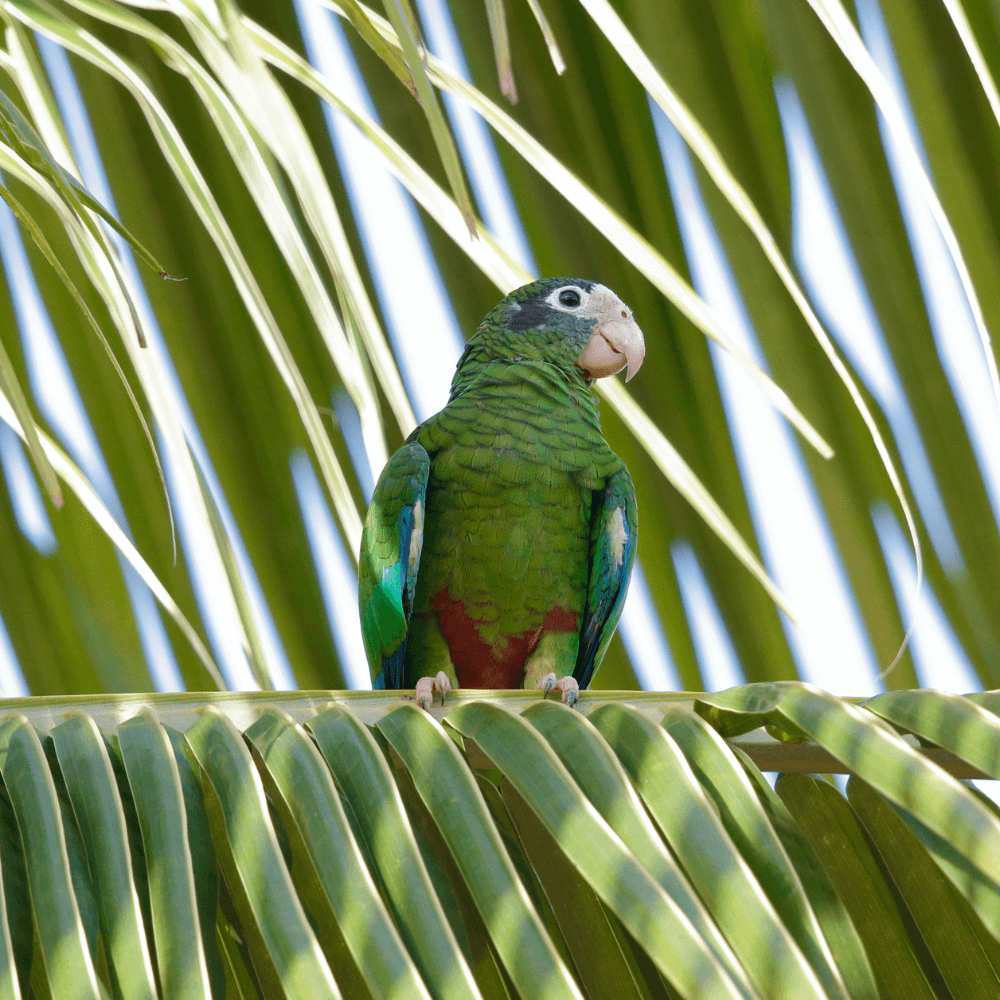Hispaniolan amazon: 28-31cm. length and 250 grams, The Hispaniolan Parrot (Amazona ventralis) has a front Lords color and white (variable extension); the upper crown and cheeks with blue feathers and black tips; helmet ears Yes lower cheeks, charcoal color (variable extent); nape feathers and sides of the neck, emerald green with visible black tips.
Mantle Yes back green grass with black tips, which gradually become less visible at the bottom; Grupa Green, slightly yellowish; upper tail-coverts yellow-green. large blue blankets; remaining coberteras the green grass. Primary Yes secondary, the blues, darker towards the tips, on the internal networks. Under the Wings, Green; blue-green flight feathers.
From above, the tail is green (perhaps a little darker than the rest of the upper parts) with a visible yellow tip and outer networks with outer feathers with blue margins; below, the tail is yellowish, with the bases of the outer feathers red. Pink Woodpecker; cere brownish white; skin orbital ring White; brown the iris; pale gray legs.
There is no sexual dimorphism. Young as an adult, but less in the crown blue and the abdominal patch is paler brown.
Some authors consider that the Hispaniolan Amazon is congener (belonging to the same species) with the Cuban Parrot. Although closely related, it is considered to be quite different due to pronounced differences in plumage hue.
- Order : Psittaciformes
- Family: Psittacidae
- Genus: Amazona
- Scientific name : Amazona ventralis
- Quote : ( Statius Müller , 1776)
- Protonimo : psittacus ventralis
- Origin: Dominican Republic, Haiti, Puerto Rico
- Longevity: 50 years.
- Height: 28-31cm.
Amazon habitat

The Hispaniolan Amazon is distributed in a variety of forest habitats, from lowland sandy palm savannahs to montane pine forests and moist montane forests. Currently most commonly seen in the montane forests of Hispaniola Island, due to continued deforestation, although the birds also feed at lower elevations. Observed above 1500 m ( Hispaniola ).
Torque display during reproduction; outside the breeding season, seen in small flocks, usually up to a dozen birds; much larger meetings, up to 500 reported in 19th-century birds. Pairs and pairs with young are often identifiable in flocks.
Reproduction
Nests are usually built in tree cavities, but also in rock crevices, cactus voids, and coconut cavities. Territorial and very aggressive while playing. The breeding season covers the months from February to May. Clutch 2-3 eggs.
Food

They feed, among others, on seeds or fruits of Caesalpinia, Psidium Yes ficus, seeds of wild Citrus oranges, corn Yes bananas.
Distribution
The Hispaniolan amazon is distributed by the islands of Hispaniola ( Dominican Republic Yes Haiti ), Île de la Gonâve ( Haiti ), Isla Saona ( Dominican Republic ), Puerto Rico, and arguably Serpent ( Puerto Rico ) in the West Indies.
It is found in moderate numbers in parts of the Sierra de Bahoruco, Sierra Neiba, and Cordillera Central in the Dominican Republic. Smaller and fewer in Haiti, with the remaining population apparently largely in the south of the country.
introduced into Puerto Rico, where the wild population from captive birds escaped and at least one batch of illegally traded birds was released after discovering an attempt to import Puerto Rico. also wild populations US Virgin Islands .
Once widespread in Hispaniola, although during the 20th century, there was a sharp decline in its population, mainly attributable to habitat destruction (resulting from agriculture and coal production). Also persecuted due to crop damage, hunted for food, and trapped for sale as pets locally and internationally.
Although it remains locally common, it is quite uncommon and uncommon in the wild.
The population in Puerto Rico is at least several hundred birds and apparently growing.
Endangered

• Current IUCN Red List Category: Vulnerable.
• Demographic trend: Degressive.
• Population size: 6000-15000
The rationale for Red List Category
This species is considered Vulnerable because anecdotal evidence suggests that there has been a rapid reduction in the population. The population size and exact extent of decline are unclear, and clarifying and may lead to the species being reclassified as Near Threatened.
No new data on population trends, but the species is suspected to be declining rapidly, as a result of hunting, habitat loss, and capture.
Threat
Agricultural reconversion and charcoal production have destroyed the most suitable habitat. It is also persecuted as a pest of crops, hunted down as food, and imprisoned for local trade and above for international cage bird trade. ( Juniper and Parr 1998 ).
Trapping adults and stealing hatchlings from nests to supply the local pet trade is of particular concern because in some areas most families own a parrot, and they only live a few years before needing to be replaced ( G. Woolmer in some. T. White a bit., 2012 ). In addition, activities flight nests often cause the destruction of the nest cavity or nesting tree, further aggravating the loss of nesting habitat from other causes (T. White in a small.


